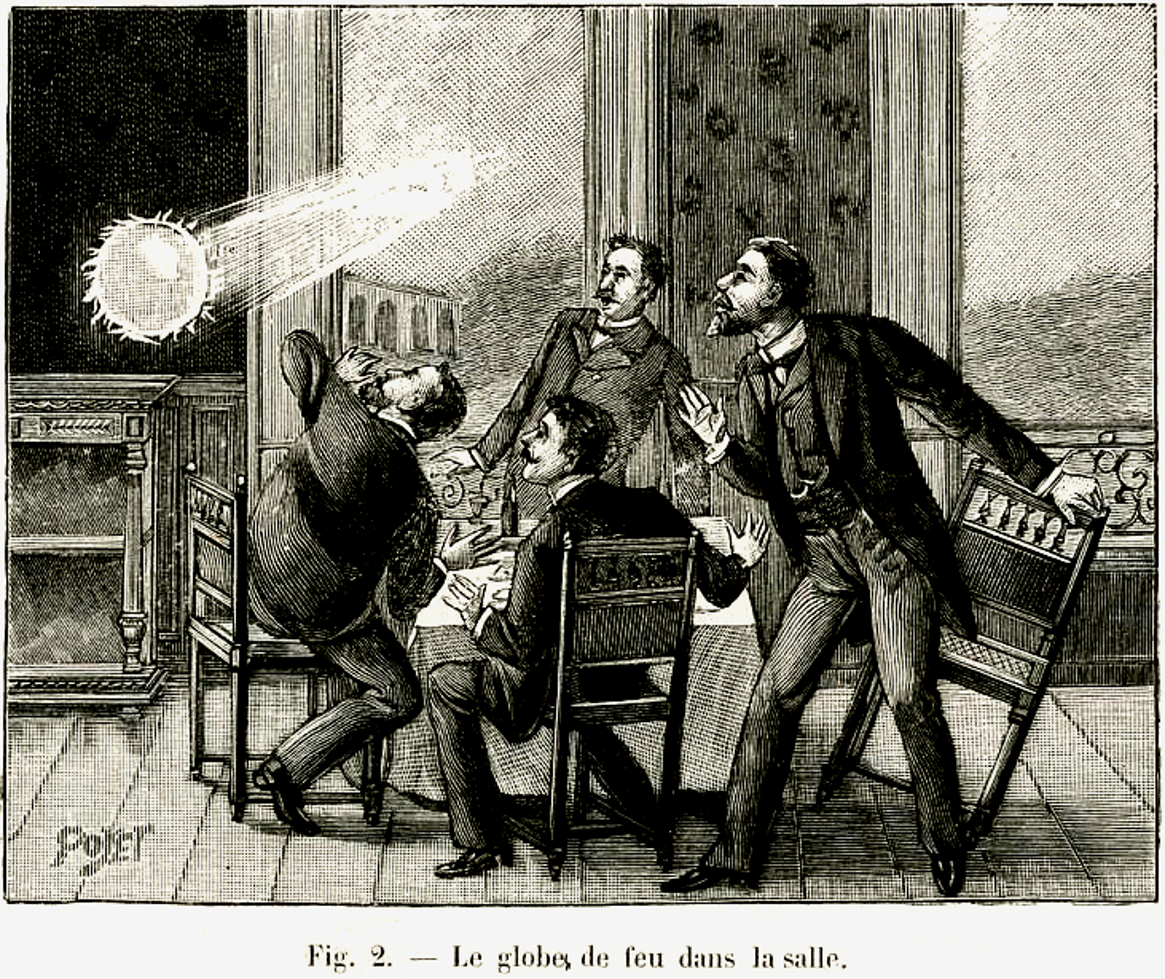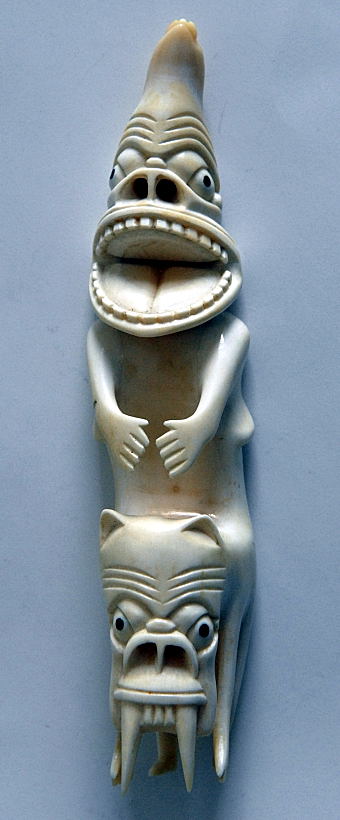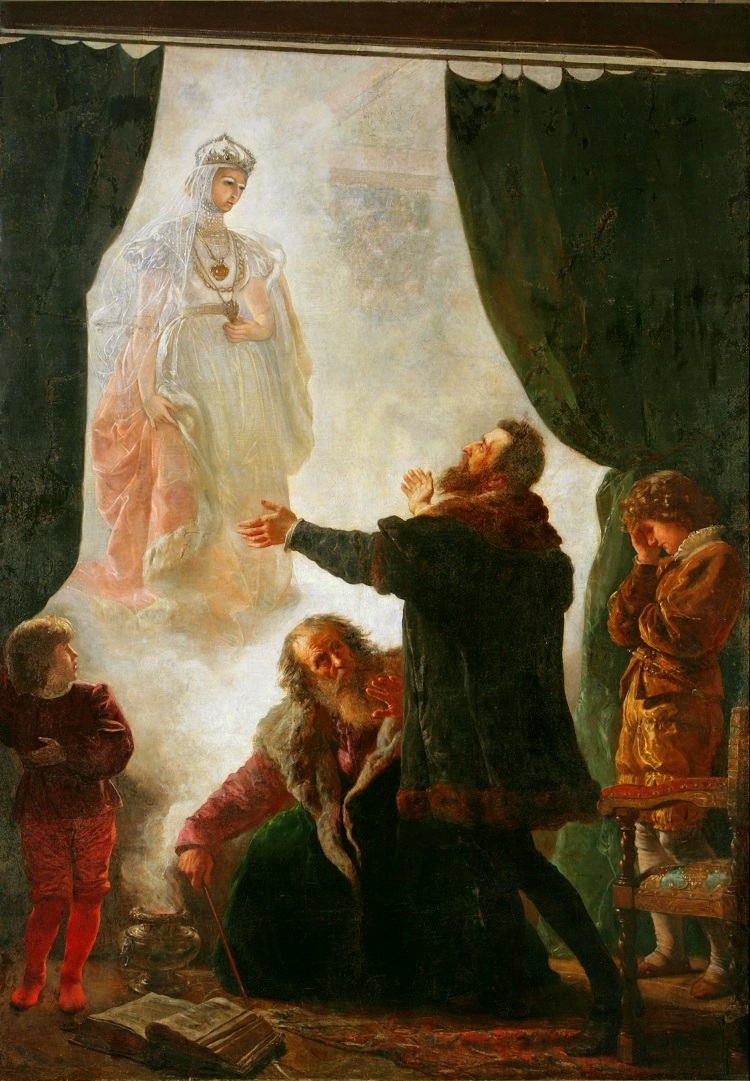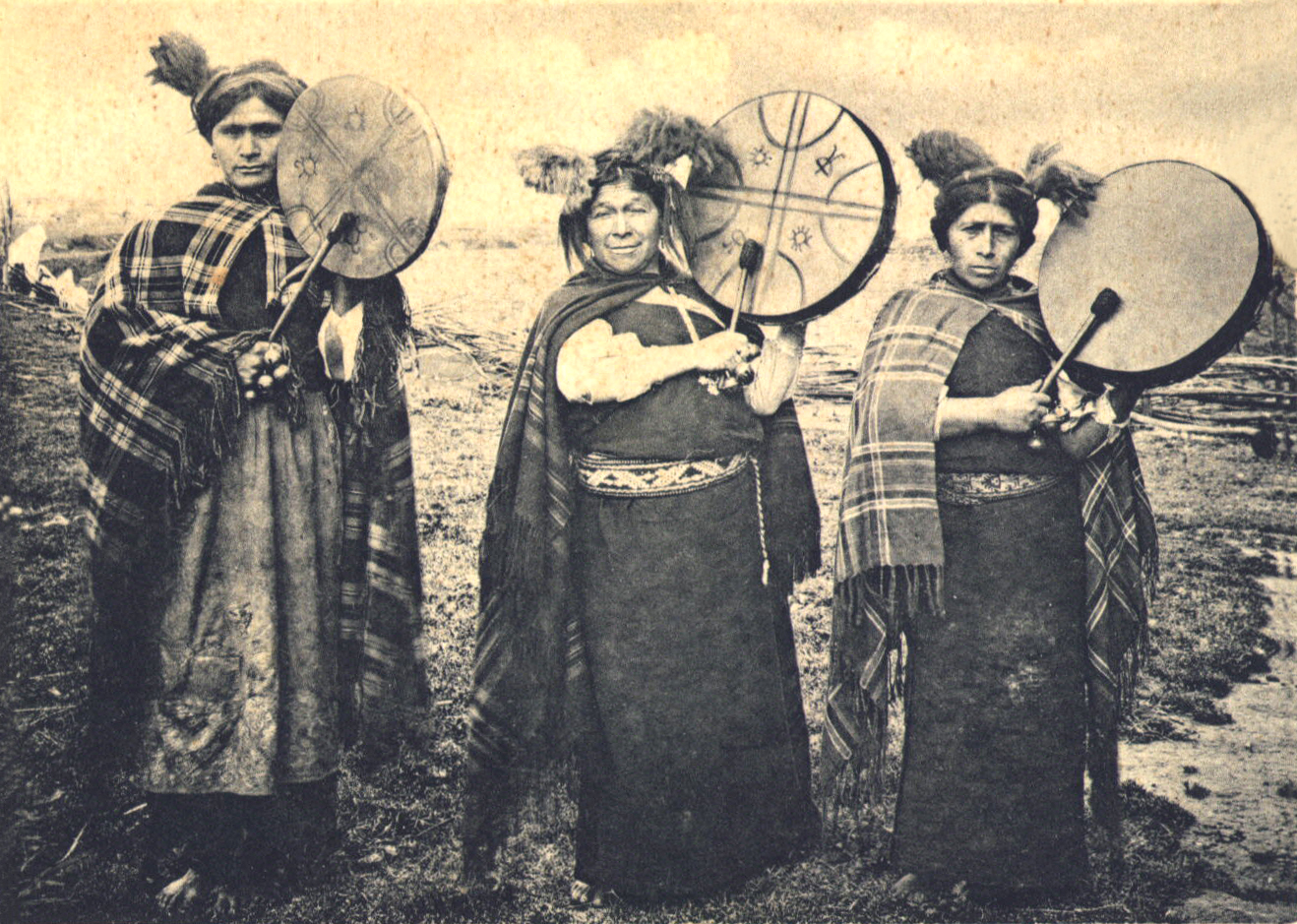|
Anchimayen
The Anchimayen (in the Mapudungun language, also spelled "Anchimallén" or "Anchimalguén" in Spanish) is a mythical creature in Mapuche mythology. Anchimayens are described as little creatures that take the form of small children, and can transform into fireball flying spheres that emit bright light. They are the servants of a kalku (a type of Mapuche sorcerer), and are created from the corpses of children. Anchimayens are sometimes confused with Kueyen (the Mapuche lunar goddess), because she also produces a bright light. See also * Ball lightning * Energy being * Tupilaq * Tikoloshe In Zulu mythology, Tikoloshe, Tikolosh, Tokoloshe, Tokolotshe, Thokolosi or Hili is a dwarf-like water sprite. It is a mischievous and evil spirit that can become invisible by drinking water or swallowing a stone. Tokoloshes are called upon ... References * Louis C. Faron. The Mapuche Indians of Chile. Case studies in cultural anthropology. Holt, Rinehart and Winston, 1968. Mapuche le ... [...More Info...] [...Related Items...] OR: [Wikipedia] [Google] [Baidu] |
Ball Lightning
Ball lightning is a rare and unexplained phenomenon described as luminescent, spherical objects that vary from pea-sized to several meters in diameter. Though usually associated with thunderstorms, the observed phenomenon is reported to last considerably longer than the split-second flash of a lightning bolt, and is a phenomenon distinct from St. Elmo's fire. Some 19th-century reports describe balls that eventually explode and leave behind an odor of sulfur. Descriptions of ball lightning appear in a variety of accounts over the centuries and have received attention from scientists. An optical spectrum of what appears to have been a ball lightning event was published in January 2014 and included a video at high frame rate. Laboratory experiments have produced effects that are visually similar to reports of ball lightning, but how these relate to the supposed phenomenon remains unclear. Scientists have proposed a number of hypotheses to explain reports of ball lightning over ... [...More Info...] [...Related Items...] OR: [Wikipedia] [Google] [Baidu] |
Kalku
Kalku or Calcu, in Mapuche mythology, is a sorcerer or witch who works with black magic and negative powers or forces. The essentially benevolent shamans are more often referred to as '' machi'', to avoid confusion with the malevolent kalku. Its origins are in Mapuche tradition. The word kalku is a borrowing from Puquina language Its adoption by Mapuches fits into a pattern of parallels in the Mapuche and Central Andean cosmology (Inca religion) dating back to the times of Tiwanaku Empire when Puquina was an important language. Description The ''kalku'' is a semi-mythical character that has the power of working with ''wekufe'' "spirits or wicked creatures". An example of a ''wekufe'' is the Nguruvilu. The ''kalku'' also have as servants other beings such as the Anchimayen, or the Chonchon (which is the magical manifestation of the more powerful ''kalku''). A mapuche ''kalku'' is usually an inherited role, although it could be a ''machi'' that is interested in lucrative ends or ... [...More Info...] [...Related Items...] OR: [Wikipedia] [Google] [Baidu] |
Energy Being
An energy being or astral being is an alleged life form that is composed of energy rather than matter. They appear in myths/legends, paranormal/UFO accounts, and in various works of speculative fiction, also in some religions it's believed that there is a whole race of such creatures who live amongst humans; and "satan" is a rogue one of them. Energy beings are typically rendered as a translucent glowing fluid or as a collection of flames or electrical sparks or bolts; somewhat in common with the representations of ghosts. Energy beings have a variety of capacities. The Taelons (from '' Earth: Final Conflict'') are barely more powerful than mortals, while others such as ''Star Trek''s Q, ''Stargate SG-1''s Ascended Ancients/Ori, '' Ben 10: Alien Force''s Anodites, or the Meekrob from ''Invader Zim'' possess god-like powers. In science fiction * Vorlons (''Babylon 5'') * Some of the First Ones (''Babylon 5'') * Organians (''Star Trek'') * Prophets and Pah Wraiths (''Star Tre ... [...More Info...] [...Related Items...] OR: [Wikipedia] [Google] [Baidu] |
Tupilaq
In Greenlandic Inuit religion, a (, , or in Inuktitut syllabics) was an avenging monster fabricated by a practitioner of witchcraft or shamanism by using various objects such as animal parts (bone, skin, hair, sinew, etc.) and even parts taken from the corpses of children. The creature was given life by ritualistic chants. It was then placed into the sea to seek and destroy a specific enemy. The use of a was considered risky, as if it was sent to destroy someone who had greater magical powers than the one who had formed it, it could be sent back to kill its maker instead,Kleivan & Sonne 1985: 23; Plate XLIII, XLV although the maker of the could escape by public confession of their deed. Because were made in secret, in isolated places and from perishable materials, none have been preserved. Early European visitors to Greenland, fascinated by the native legend, were eager to see what looked like, so the Inuit began to carve representations of them out of sperm whale teeth. ... [...More Info...] [...Related Items...] OR: [Wikipedia] [Google] [Baidu] |
Tikoloshe
In Zulu mythology, Tikoloshe, Tikolosh, Tokoloshe, Tokolotshe, Thokolosi or Hili is a dwarf-like water sprite. It is a mischievous and evil spirit that can become invisible by drinking water or swallowing a stone. Tokoloshes are called upon by malevolent people to cause trouble for others. At its least harmful, a tokoloshe can be used to scare children, but its power extends to causing illness or even the death of the victim. The creature might be banished by a pastor (especially with an apostolic calling), who has the power to expel it from the area. It is also considered a part of superstition and is often used in a satirical manner as a reference to overcome. Mythology The advent of the phantom Tokoloshe came about through Bantu folklore to explain why people inexplicably died while sleeping in their rondavels at night. Traditionally, these people slept on the floor on grass mats encircling a wood fire that kept them warm during sub-freezing cold winter nights on the high ... [...More Info...] [...Related Items...] OR: [Wikipedia] [Google] [Baidu] |
Corporeal Undead
The undead are beings in mythology, legend, or fiction that are deceased but behave as if alive. Most commonly the term refers to Human body, corporeal forms of formerly-alive humans, such as mummy (undead), mummies, vampires, and zombies, who have been reanimated by supernatural means, technology, or disease. In some cases (for example in Dungeons & Dragons) the term also includes Incorporeality, incorporeal forms of the dead, such as ghosts. The undead are featured in the belief systems of most cultures, and appear in many works of fantasy fiction, fantasy and horror fiction. The term is also occasionally used for real-life attempts to Resurrection#Technological resurrection, resurrect the dead with science and technology, from early experiments like Robert E. Cornish's to future sciences such as "chemical brain preservation" and "cryonics." History Bram Stoker considered using the title, ''The Un-Dead'', for his novel ''Dracula'' (1897), and use of the term in the novel is ... [...More Info...] [...Related Items...] OR: [Wikipedia] [Google] [Baidu] |
Mapudungun
Mapuche (, Mapuche & Spanish: , or Mapudungun; from ' 'land' and ' 'speak, speech') is an Araucanian language related to Huilliche spoken in south-central Chile and west-central Argentina by the Mapuche people (from ''mapu'' 'land' and ''che'' 'people'). It is also spelled Mapuzugun and Mapudungu. It was formerly known as Araucanian, the name given to the Mapuche by the Spaniards; the Mapuche avoid it as a remnant of Spanish colonialism. Mapudungun is not an official language of the countries Chile and Argentina, receiving virtually no government support throughout its history. However, since 2013, Mapuche, along with Spanish, has been granted the status of an official language by the local government of Galvarino, one of the many Communes of Chile. It is not used as a language of instruction in either country's educational system despite the Chilean government's commitment to provide full access to education in Mapuche areas in southern Chile. There is an ongoing political ... [...More Info...] [...Related Items...] OR: [Wikipedia] [Google] [Baidu] |
Mapuche Mythology
The mythology and religion of the indigenous Mapuche people of south-central Chile and southwestern Argentina is an extensive and ancient belief system. A series of unique legends and myths are common to the various groups that make up the Mapuche people. These myths tell of the creation of the world and the various deities and spirits that reside in it. Overview In order to describe the beliefs of the Mapuche people, it is important to note that there are no written records about their ancient legends and myths from before the Spanish arrival, since their religious beliefs were passed down orally. Their beliefs are not necessarily homogenous; among different ethnic groups, and the families, villages, and territorial groups within those ethnic groups, there are variations and differences and discrepancies in these beliefs. Likewise, it is important to understand that many of the Mapuche beliefs have been integrated into the myths and legends of Chilean folklore, and to a les ... [...More Info...] [...Related Items...] OR: [Wikipedia] [Google] [Baidu] |
Kueyen
Kueyen or kuyen is the name given to the moon in Mapuche mythology. She is the principal wangulen spirit. Kueyen governs the others wangulen spirits (spirits of the stars). Kueyen is married Antu (the Pillan spirit that represents the sun). Mistakenly, Kueyen is also sometimes known by the name of Anchimallen The Anchimayen (in the Mapudungun language, also spelled "Anchimallén" or "Anchimalguén" in Spanish) is a mythical creature in Mapuche mythology. Anchimayens are described as little creatures that take the form of small children, and can transfo ... (a name that makes reference to another class of mythological creatures). References *Alberto Trivero (1999); Trentrenfilú, Proyecto de Documentación Ñuke Mapu. Mapuche goddesses Lunar goddesses {{Chile-stub ... [...More Info...] [...Related Items...] OR: [Wikipedia] [Google] [Baidu] |
Mapuche Legendary Creatures
The Mapuche ( (Mapuche & Spanish: )) are a group of indigenous inhabitants of south-central Chile and southwestern Argentina, including parts of Patagonia. The collective term refers to a wide-ranging ethnicity composed of various groups who shared a common social, religious, and economic structure, as well as a common linguistic heritage as Mapudungun speakers. Their habitat once extended from Aconcagua Valley to Chiloé Archipelago and later spread eastward to Puelmapu, a land comprising part of the Argentine pampa and Patagonia. Today the collective group makes up over 80% of the indigenous peoples in Chile, and about 9% of the total Chilean population. The Mapuche are particularly concentrated in the Araucanía region. Many have migrated from rural areas to the cities of Santiago and Buenos Aires for economic opportunities. The Mapuche traditional economy is based on agriculture; their traditional social organization consists of extended families, under the direction of a ... [...More Info...] [...Related Items...] OR: [Wikipedia] [Google] [Baidu] |






